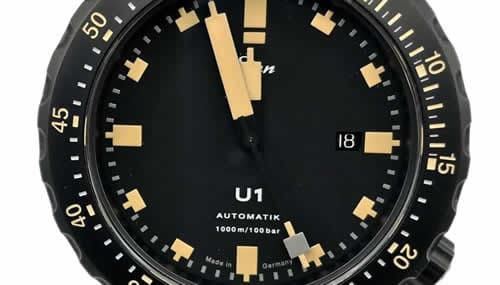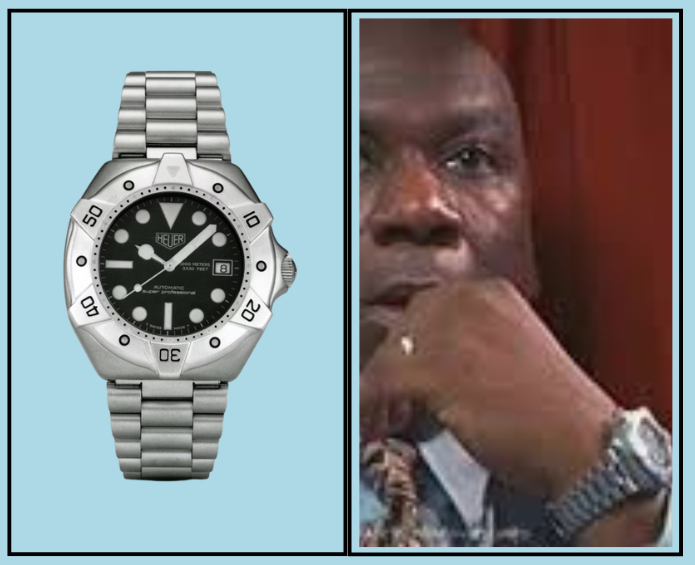
A watch is a tool. A watch is a mechanical wonder. A watch is a functional accessory, a piece of art, and everything in between. A luxury watch is what you make it.
And it is this balancing act – this traversing of currents that dictate the latest styles and the continual ebb and flow of trends – that make these instruments so desirable to us humans.
We are but mere crows in disguise beneath it all. We like to collect shiny things. Shiny things that tick. And each year, we enjoy an influx of new and exciting designs from world-leading brands.
Some are perfect as daily beaters, and others are pure “nailed it” designs worthy of peacocking as pure objects of envy.
But we’ve seen a considerable shift from bling watches to quiet luxury over the last couple of years. Gen-Z is seeking out something altogether modest and unassuming in grandeur. The new “stealth wealth” watch depicts an old money aesthetic. One where wealth is inherited rather than earned.
Collectors are helping to put the value back into old-time classics – if not the real deal vintage collectibles, then at least in modern designs that echo the class and status of a traditional watch.
Thus, this year at Watches & Wonders, we saw a flux of elegant, classic designs dominating the exhibition cabinets.
If the idea of a stealth wealth watch appeals to you – something modestly understated that subtly communicates affluence and the type of refinement you’d see in the upper echelons of watch collecting – check out these top status watches I’ve rounded up in this guide. First, however, let’s take a quick look at the power of social media and how it influences watch trends.
Social Media and Watch Trends
Few factors are more important in marketing a watch than social media. Luxury and fashion are dictated to us by what we see, both in written content and with visuals via social feeds.
It’s the modern marketplace for luxury timepieces – a far cry from the traditional auction houses or brick-and-mortar dealerships, which would once have been our only through route to acquiring a rare and covetable timepiece.
Social media is slowly but surely strengthening and cementing the concept of watches being a physical embodiment of status, and over the years, it has done that in different ways.
We’ve jumped from Jay-Zs blinged-out Jacob & Co. Bugatti Tourbillon to Haily Bieber’s vintage Audemars Piguet cocktail watch in what feels like the blink of an eye.
Whether we like it or not, platforms like Instagram portray society’s elite or, more specifically, wealthy celebrities, selling a particular lifestyle through a brand name or a popular model, and we all lap it up like dogs.
The Best Watches That Define the Quiet Luxury Movement 2025
Interestingly, the drastic switch from unattainable diamond-festooned watches and integrated sports watches that fetch five-digit figures to designs that are actually doable and wearable means that we now have much more variety than ever before.
Even some Omegas and Rolexes are affordable if you know how and where to seek them out. For the first time ever, all these status watches tick the “stealth wealth” box and redefine luxury as we once knew it without being too ostentatious. And it’s refreshing.
The Cartier Tank

Let’s hit this guide off with a banger. The Cartier Tank is a thoroughbred classic. From its two parallel brancards to its elegant chemin de fer chapter ring, this military tank-inspired design re-wrote history when it emerged in 1917 with its bold rectangular profile, sword-shaped hands, and cabochon-adorned crown.
It’s crazy to think that this minimalist yet refined watch could stand the test of time despite the many avant-garde innovations that followed over the years.
But the Tank should be a staple to any style-oriented man’s wardrobe. It’s one of the few watches out there that can discreetly slip under the cuff of a shirt when you need it to, but at the same time, has this ability to stand out in a crowded room as a bold and solid design.
The range is undoubtedly vast. It offers plenty of refined models crafted from gold powered by mechanically driven engines. Likewise, there’s nothing wrong with the collection’s quartz-powered steel variations either.
All exude the stealth wealth factor, and with so many reasonably priced options to explore, the Cartier Tank is a kind of cheat code to achieve an affluent status within the watch-collecting society without robbing a bank.
The Nomos Lambda 39

Not all watch collectors desire the “Made in Switzerland” label, and many young enthusiasts are beginning to explore the benefits and joys of owning a non-Swiss watch.
Look at Nomos, for example. Take a look at the Nomos Lambda 39 and tell me it doesn’t epitomize quintessential German manufacture.
The dial arrangement of the Lambda 39 subtly encroaches on A Lange & Sohne territory, with its unique power reserve layout taking residence across the entire northern hemisphere of the dial.
Yet, simultaneously, the use of the heat-treated blue hands and the needle-fine slimness of the indexes and markings on the display retain the all-important Bauhaus-style fingerprint of authentic Nomos design.
The 18k rose gold case turbo boosts the watch to “fine dress watch” level, while the leather band will surely pair with any attire.
Thanks to twin mainspring barrels, the caliber DUW 1001 can offer a three-and-a-half-day power reserve, while features like the hand-engraved balance cock show off some exquisite examples of German craftsmanship.
Rolex Oyster Perpetual

Strip the timeless Oyster Perpetual from its date window, and you get a 36mm status watch that’s instantly identifiable but compact and understated at the same time.
This reference 126000 doesn’t cost an arm and a leg and still communicates those all-important hallmarks of Rolex craftsmanship: exceptional build quality, unmatched class, and a unique green dial color that Rolex specialists achieve via a 6-layer lacquer technique. The process is completed with a varnishing and polishing technique to accentuate its full brilliance.
The Oyster Perpetual is one of Rolex’s more affordable models, but it still features all the robustness and resistance you’d expect from any Rolex watch. A strong 904L stainless steel case leads to an expertly manufactured Oystersteel bracelet featuring a flat three-piece link design and a sturdy Oysterclasp.
This design serves as a powerful statement of the brand’s heritage and innovation. Still, because it doesn’t tend to garner the same level of respect as, say, the Submariner or the Daytona, its status watch appeal may not be as apparent to every collector.
Even so, a Rolex watch of any kind is a wise investment, and models like the Oyster Perpetual are perfect for those who don’t necessarily want to follow the crowd.
The TAG Heuer Carrera

Another example of a timepiece that proves a status watch doesn’t need to break the bank. The TAG Heuer Carrera is one of the most classic sports watches on the market, and anyone familiar with the brand will no doubt have heard of its name before.
The design of the Carrera is inspired by the Carrera Panamericana race in Mexico and connects the Swiss watchmaker to its deeply rooted heritage in motorsport.
Considering the trend for simple designs, even the modern three-handed Carrera takes a minimalist twist. Even so, it loses none of its classic charm and character.
TAG Heuer is a young person’s brand as much as anything else. Take a look at the latest Formula 1 Solargraphs, for example. These 2025 releases harken back to the original 1980s designs but inject a boldness and a vivid dose of color that look at home on youthful wrists.
The TAG Heuer Carrera, however, suits the old money wardrobe. Its slim bezel, combined with elegant dial detailing, makes for a compelling status watch that looks like it costs much more than its sub-$5k price tag.
Vacheron Constantin Patrimony Manual Winding 39

People have been wearing Vacheron Constantin watches as status symbols for many years due to the brand’s exceptional craftsmanship and its reputation for producing elegant timepieces in limited production.
The brand also has a rich heritage as a fine watchmaker, being one of the three Holy Trinity brands and an innovator of the first perpetual calendar wristwatch in 1929.
Although more expensive than some of the other options on this list, Vacheron Constantin watches are a unique blend of horological innovation and artistry and are classic through and through.
The Patrimony watch collection is home to a vast array of dress watches, all of which impart that very special “stealth wealth” appeal.
Complications like the Moon Phase Retrograde watch display an exceptional level of work, with a poetical layout featuring a “pearl” minute track on an old silver-toned dial and a retrograde date hand encased within an 18k gold exterior.
However, for something simpler and more affordable, the two-handed Manual Winding models have to be the status watches of 2025. As seen in this example, experts have beautifully orchestrated the faceted rose gold hour markers to sit against a contrasting white gold case.
At the same time, the choice of a pistachio green alligator leather band perpetuates the brand’s ability to play about with unconventional color schemes.
TUDOR Black Bay 54

You don’t need a Rolex Sub on your wrist to be a man of good taste. You can do it with neo-vintage designs like the Black Bay.
If you didn’t know, TUDOR used to be dubbed the “poor man’s Rolex.” But over recent years, we’ve really seen the brand come into its own, especially with designs like the neo-vintage Black Bay. The collection is a relatively new one, not half as impressive as Rolex’s Submariner heritage, of course.
But dive watches will never go out of fashion. I’m sure their enduring, rugged elegance will still be enjoyed just as much in fifty years. And models like the Black Bay are a more affordable alternative.
The Back Bat 54 is the most true-to-form interpretation of the brand’s much older dive watch original (so there’s still some good history in this design), measuring a compact 37mm in case size.
Along with its classic proportions, the model boasts the technical prowess of an in-house movement and displays all the hallmarks of the ever-popular Black Bay series.
These features include the unidirectional rotating bezel, large luminous hour markers set upon a domed dial, and the iconic “Snowflake” hands that defined TUDOR’s post-1960s dive watch era.
Patek Philippe In-Line Perpetual Calendar 5236P

Patek Philippe’s Perpetual Calendar is no ordinary calendar watch. Back when the brand became one of the pioneers of this very special complication, Patek never rested on its laurels and was determined to make the feature more legible.
Remedying the difficult-to-read month, day, and date sub-scales, the brand invented the In-line Perpetual Calendar, which features a clean alignment of indicators for the day, date, month, and lunar cycles.
One of Patek’s very own independently crafted movements sits inside a platinum case, while the perfectly aligned moon phase complication adheres to the tasteful blue and silver color scheme on the dial.
Of course, Patek Philippe watches are far from cheap, but if money is no object, the Patrimony In-Line Perpetual Calendar will certainly exude the appeal of the status watch to boot.
IWC Schaffhausen Ingenieur Automatic 40
I may have left my favorite watch until last. The IWC Ingenieur Automatic 40 was released at the Watches & Wonders Palexpo back in April. And guess who joined its launch? No other than Jerry Bruckheimer, producer of the upcoming “F1” movie starring Brad Pitt. Shame he didn’t make an appearance, too, huh?
The new movie filmed live action from F1 weekends all over the world, including the British Grand Prix, with Lewis Hamilton joining the team as one of the movie’s co-producers. In the film, Pitt, who plays the character of Sonny Hayes, is seen wearing a prop watch that looks similar to the Ingenieur Automatic 40.
As the most anticipated release of the collection, it makes sense for this green Ingenieur watch to make it onto my list of best status watches for 2025. Its dial features the recognizable grid pattern and golden hands propelled by the brand’s Calibre 32111.
The Ingenieur has always garnered a cult-like following, Its characteristics are all faithful to the integrated steel sports watch, complete with a beautifully articulating H-Link bracelet, proven for comfort.
Since its inception in the 1950s, the Ingenieur has been slowly evolving as a robust sports watch and, fascinatingly, is just as relevant on the modern wrist today as it was back then.
Status Watches Don’t Have to Cost the Earth
The last few years have taught us that status watches don’t have to burn a hole in our wallets. They can be parred-back, understated, and resolutely simple, too. Quiet luxury seems the way to go, with brand after brand releasing classic takes on historically significant designs.
#Perhaps Cartier is a fitting example to use. The brand released the Tank Must in 1977 and reissued it in the Spring of 2022, where it was met with resounding success.
Collectors far and wide reveled in the resurgence of the Art Deco-inspired design, in the same way the emblematic Cartier Tank à Guichets made a comeback at the Geneva showcase this year with its unconventional jump hour.
Speaking of Jump Hour watches, take a look at the latest Bremont Terra Nova Jumping Hour watch in Bronze. Both designs appeal to an era of vintage romanticism, fusing functional style with historical importance very compellingly.
Collectors, young and experienced, are looking for old money-style status appeal in a watch today. And whether you look towards the higher echelons of watchmaking for such a design, or towards the affordable end of luxury timekeeping, if it looks the picture of refinement and exuberance, it will undoubtedly carry the essence of an all-important status watch.












































